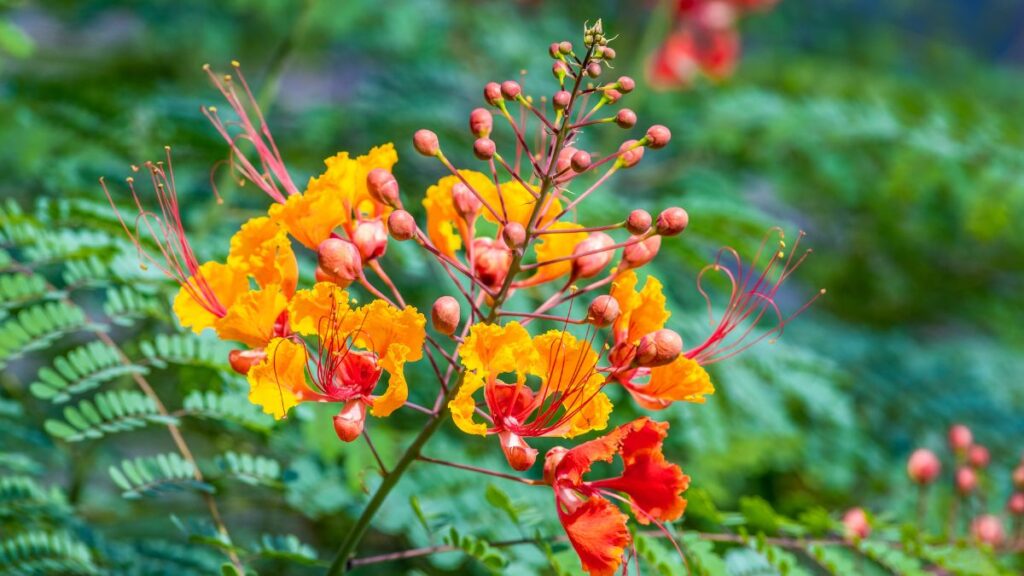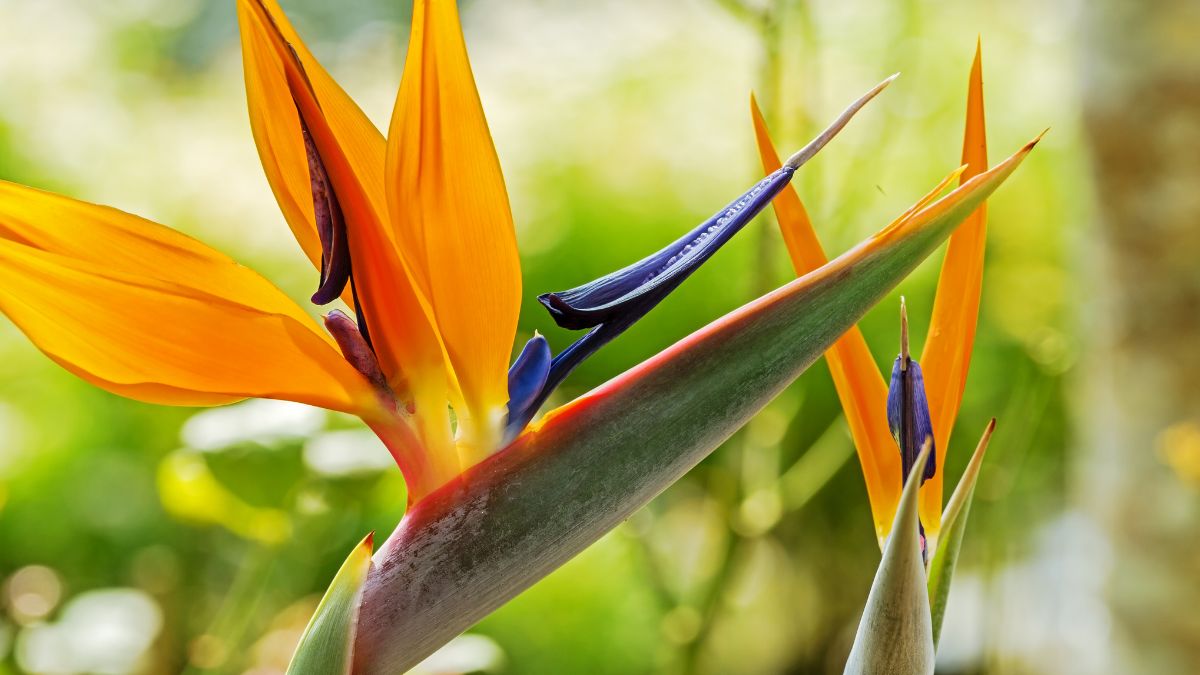Introduction
Mexican Bird of Paradise Plant
If you’re looking for a stunning addition to your garden that attracts hummingbirds and requires minimal upkeep, then the Mexican Bird of Paradise plant might be the perfect choice. Known for its vibrant blooms and low-maintenance nature, this plant adds a touch of tropical elegance to any landscape.

Characteristics of the Mexican Bird of Paradise Plant
Appearance
The Mexican Bird of Paradise, scientifically known as Caesalpinia pulcherrima, features striking orange and red flowers that resemble the plumage of tropical birds. Its fern-like foliage adds to its visual appeal, making it a popular choice for landscape design.
Growth Habits
This perennial shrub can reach heights up to 10 feet tall and spread outwards with equal vigor. Its rapid growth rate makes it ideal for quickly filling empty spaces in your garden.
Environment Requirements
Mexican Bird of Paradise thrives in warm, sunny climates and is native to regions like Mexico and the Caribbean. It prefers well-draining soil and can tolerate drought conditions once established.
Benefits of Growing Mexican Bird of Paradise
Attracting Hummingbirds
One of the main attractions of the Mexican Bird of Paradise Plant is its ability to attract hummingbirds with its vibrant flowers. These tiny birds are drawn to the nectar-rich blooms, adding life and movement to your garden.
Low Maintenance
Unlike other tropical plants, the Mexican Bird of Paradise is relatively low maintenance once established. It can tolerate various soil conditions and requires minimal pruning to maintain its shape.
Landscape Appeal
Whether planted as a focal point or as a border plant, the Mexican Bird of Paradise adds color and texture to any landscape. Its ability to thrive in hot, dry climates makes it a versatile choice for gardens in arid regions.

How to Plant Mexican Bird of Paradise
Soil Requirements
Mexican Bird of Paradise prefers well-draining soil with a slightly acidic to neutral pH. Amend heavy clay soils with organic matter to improve drainage and fertility.
Sunlight and Watering Needs
Plant Mexican Bird of Paradise in a location that receives full sun for optimal growth and flowering. Water regularly during the plant’s establishment period, then gradually reduce watering frequency as it becomes established.
Propagation Techniques
Mexican Bird of Paradise can be propagated from seeds or stem cuttings. Collect seeds from mature pods and sow them in well-draining soil in the spring. Stem cuttings can be taken from healthy, established plants and rooted in a moist growing medium.
Care and Maintenance Tips
Pruning
Prune Mexican Bird of Paradise in late winter or early spring to remove dead or damaged growth and shape the plant as desired. Avoid heavy pruning, as this can reduce flowering.
Pest and Disease Control
Mexican Bird of Paradise is relatively pest and disease-resistant but may occasionally attract aphids or caterpillars. Treat infestations with insecticidal soap or horticultural oil, and monitor for signs of disease such as leaf spot or root rot.
Winter Protection
In cooler climates, provide winter protection for the Mexican Bird of Paradise by mulching around the base of the plant and covering it with a frost cloth during cold snaps.

Using the Mexican Bird of Paradise in Landscape Design
Landscaping Ideas
Mexican Bird of Paradise can be used as a specimen plant, hedge, or accent in a mixed border. Pair it with other drought-tolerant plants like lavender and agave for a low-maintenance landscape design.
Companion Plants
Complement the Mexican Bird of Paradise with plants that share similar cultural requirements, such as Bougainvillea, Lantana, and Salvia. These plants not only enhance the beauty of your garden but also attract pollinators and beneficial insects.
Conclusion
The Mexican Bird of Paradise plant provides gardeners with an effortless method to incorporate tropical charm into their landscapes, all while drawing in hummingbirds and other pollinators. Its vivid blossoms, easy upkeep, and adaptability in landscaping make it a beloved choice among both new and seasoned gardeners.

FAQs
Q. How fast does the Mexican Bird of Paradise grow?
Mexican Bird of Paradise has a rapid growth rate, especially in warm climates, and can reach heights up to 10 feet within a few years.
Q. Can the Mexican Bird of Paradise survive cold climates?
While the Mexican Bird of Paradise tolerates heat and drought, it may suffer damage or die in freezing temperatures. Provide winter protection in cooler climates to ensure its survival.
Q. Does the Mexican Bird of Paradise attract other wildlife besides hummingbirds?
In addition to hummingbirds, Mexican Bird of Paradise may attract butterflies, bees, and other pollinators with its nectar-rich flowers.
Q. Is Mexican Bird of Paradise toxic to pets?
While Mexican Bird of Paradise is not considered highly toxic, ingesting large quantities of its seeds or foliage may cause gastrointestinal upset in pets. Keep pets away from the plant as a precaution.
Q. Can Mexican Bird of Paradise grow indoors?
Mexican Bird of Paradise can be grown indoors in containers if it receives adequate sunlight and has well-draining soil.
